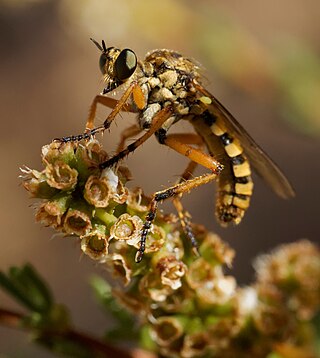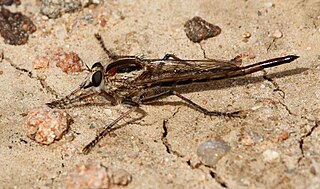Harold Oldroyd (24 December 1913 – 3 September 1978) was a British entomologist. He specialised in the biology of flies, and wrote many books, especially popular science that helped entomology to reach a broader public. His The Natural History of Flies is considered to be the "fly Bible". Although his speciality was the Diptera, he acknowledged that they are not a popular topic: "Breeding in dung, carrion, sewage and even living flesh, flies are a subject of disgust...not to be discussed in polite society". It was Oldroyd who proposed the idea of hyphenating the names of true flies (Diptera) to distinguish them from other insects with "fly" in their names. Thus, the "house-fly", "crane-fly" and "blow-fly" would be true flies, while the "dragonfly", "scorpion fly" and so on belong to other orders. He also debunked the calculation that a single pair of house-flies, if allowed to reproduce without inhibitions could, within nine months, number 5.6×1012 individuals, enough to cover the Earth to a thickness of 14.3 m (47 ft). Oldroyd calculated that such a layer would only cover Germany, but remarked "that is still a lot of flies".

The Asilidae are the robber fly family, also called assassin flies. They are powerfully built, bristly flies with a short, stout proboscis enclosing the sharp, sucking hypopharynx. The name "robber flies" reflects their expert predatory habits; they feed mainly or exclusively on other insects and, as a rule, they wait in ambush and catch their prey in flight.

The Therevidae are a family of flies of the superfamily Asiloidea commonly known as stiletto flies. The family contains about 1,600 described species worldwide, most diverse in arid and semiarid regions with sandy soils. The larvae are predators of insect larvae in soil.

Garjainia is an extinct genus of erythrosuchid archosauriform reptile from the Olenekian of Russia and South Africa. It was approximately 1.5–2 metres (4.9–6.6 ft) long. It contained two species, Garjainia prima from the Yarengian/Yarkenskian Supergorizont of Russia, and Garjainia madiba from the Burgersdorp Formation of South Africa. "Vjuskovia triplicostata", a name assigned to some erythrosuchid fossils from Russia, has been synonymized with Garjainia prima.

Dasypogoninae is a subfamily of robber flies in the family Asilidae. There are more than 60 genera and 520 described species in Dasypogoninae.
Bongolo Dam, is located on the Komani River, near Queenstown, Eastern Cape, South Africa. The dam has a capacity of 7,015,000 cubic metres (247,700,000 cu ft). The Bongolo Dam, about 5 kilometres (3.1 mi) from town on the Dordrecht road, is one of Queenstown's main sources of water, its main purpose is for industrial and municipal usage. The wall was begun in 1905 and was for years the largest concrete dam wall in South Africa. Incidentally the origin of the name Bongola has caused some controversy, but it is believed by some to have been derived from the Xhosa language word mbongolo meaning donkey, as these animals were extensively used in the construction of the dam.

Pegesimallus is a genus of robber flies.

Laphriinae is a subfamily of robber flies in the family Asilidae. There are more than 110 genera and 1,000 described species in Laphriinae. Larvae of the genus Hyperechia are known to grow inside the cells of Xylocopa bees, feeding on their larvae.

Stenopogoninae is a subfamily of robber flies in the family Asilidae. There are more than 70 genera and 740 described species in Stenopogoninae.

Alcimus is a genus of flies in the family Asilidae, the robber flies and assassin flies. There are about 26 species which are native to the Afrotropics.

Stichopogoninae is a subfamily of robber flies in the family Asilidae. There are about 14 genera and at least 230 described species in Stichopogoninae.

Asilus is a genus of robber flies in the family Asilidae. There are at least 150 described species in Asilus.

Choerades marginata is a species of robber fly found in Europe.

Hyperechia is a genus of robber flies in the family Asilidae. They appear large, stout and with legs covered in bristles and appear like carpenter bees in the genus Xylocopa and the resemblance is considered as a case of aggressive mimicry, providing protection from predators. The larvae of the fly feed on the larvae of Xylocopa within their cavity nests in wood. They are mainly found in the African and Madagascan region with about 15 species and two species in Asia.
Trichoura is a genus of robber flies in the family Asilidae discovered by Londt in 1994. There are 7 described species in Trichoura. Species in this genus live in tropical biomes across the African continent.

Laphyctis is a genus of robberflies restricted to the Afrotropical region. In the past some members were placed in the genus LaphystiaLoew, 1847. Laphyctis has an open R1 cell unlike Laphystia and has long dense macroseta on the distal margin of the male gonocoxite. Most species in the genus are found in dry sandy regions and are active in summer.
Afromosia barkemeyeri is a species of robber fly, the sole member of the genus Afromosia. The specific epithet honours Dr Werner Barkemeyer.












